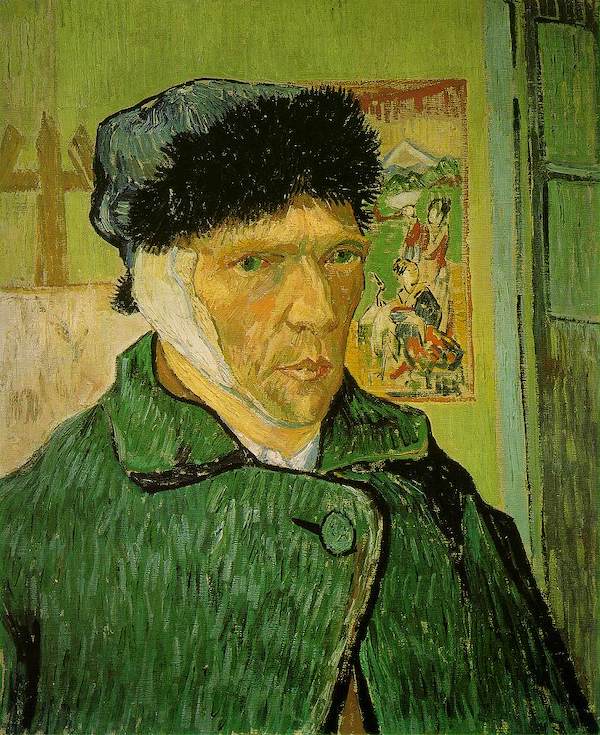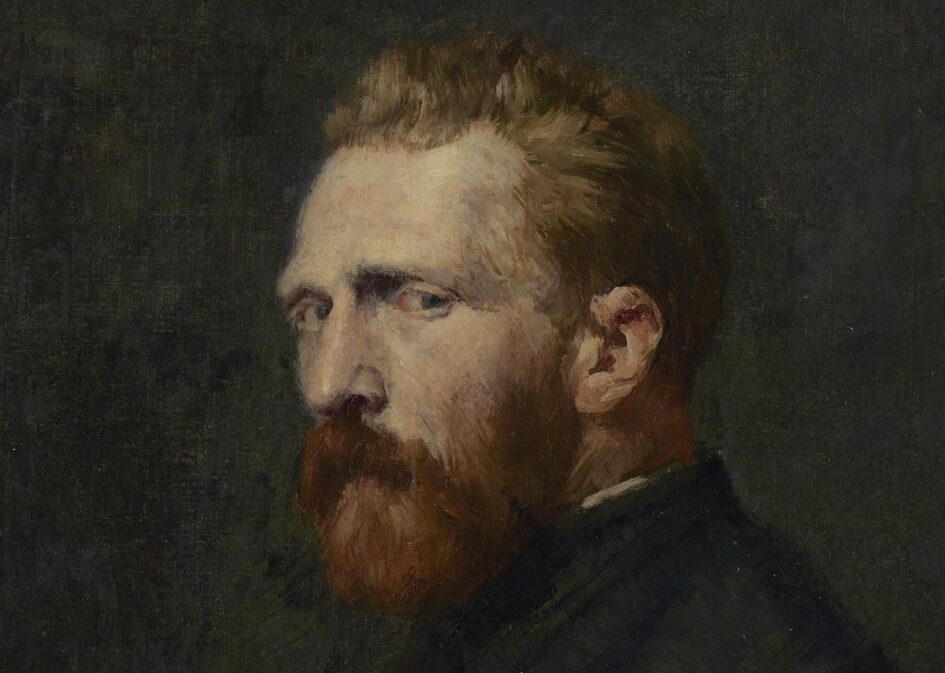Van Gogh perhaps did more self-portraits than any other artist in history. This Wikimedia page lists fourteen but there are forty-three drawings and paintings that he did of himself. (Rembrandt Van Rijn tops the list of self-portraits with about seventy-five.)

Van Gogh Self-portrait with ear bandaged.
Why did he make so many?
The obvious answer that springs in the mind of the uninformed is: self-love or narcissism, and yet, nothing could be further from the truth.
Van Gogh’s desire to paint from life and his inability of afford live models necessitated that he painted himself, or to be more precise, his reflection. His need to draw from life resulted in a flareup with Eugène Siberdt, at whose academy he had enrolled for figure-drawing classes. When his work was critiqued by Siberdt, Van Gogh had lost his temper and said, “You clearly do not know what a young woman is like, God damn it! A woman must have hips, buttocks, a pelvis in which she can carry a baby!”
You can read more about his self-portraits here.
His need to sketch from life had prompted him into a relationship with a pregnant prostitute who later committed suicide. Possibly his love for life-drawing grew while he stayed with the coal miners (he worked for the Church for a while) and began sketching the miners.

Van Gogh, Self Portrait – 1887
I see in his madness a passion to be true to what he did. When he was a missionary, moved by the situation of the miners and their families, he was giving away his clothes to them, often dressing up in rags himself. When he painted, he tasked himself with learning everything that he could about painting. “Red Vineyard at Arles” is the only painting he sold in his lifetime, but he did more than nine hundred.
Shadowed by the ghost of his dead elder brother, helped along by the money given to him by his younger brother, and aided by his passion for art – he struggled through his life until at the age of 37, he shot himself in the chest. Van Gogh’s success as an artist might have something to do with his tragically short life colored in deep dark rust – and so in a way, he painted his posthumous success in the color of his blood.
I sometimes wonder whether an artist’s posthumous success fairly compensates for a tragic life.


Leave a Reply